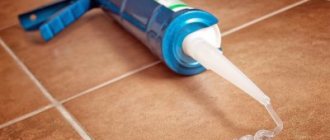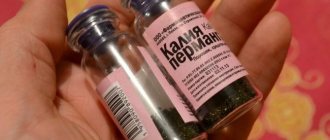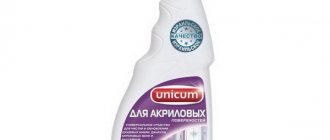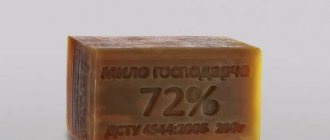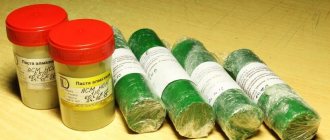Purpose of sealant
Glass products are often called window products. The reason is that most often they are used specifically for the installation, sealing and repair of window units. This helps reduce heat loss, fix cracks and prevent their spread. In addition, glass sealants are suitable for arranging and sealing:
- balconies, loggias, attics;
- counters, display cases, partitions and glass cabinets;
- greenhouses, greenhouses, glass roofs;
- advertising boxes, signs.
Many of these sealants are considered universal and, in addition to glass, are suitable for other materials - tiles, ceramics, polycarbonate, PVC, wood, metal. Using sealing compounds, you can install ventilation, air conditioning systems, cable ducts, various corner and expansion joints.
Features and Benefits
Glass sealants most often cure under the influence of atmospheric moisture, transforming into an elastic but durable mass. These materials, unique in their properties, are made on the basis of rubber (silicone) or various polymers using modern technologies. After application to the glass, a moisture-resistant structure is formed that is difficult to damage mechanically.
Most glass sealants are UV resistant and therefore suitable for indoor and outdoor use. They do not deteriorate from temperature changes or the influence of aggressive chemicals, and can work in heat or temperatures below minus.
The advantages of sealants are:
- Reliability. The degree of adhesion of the products to glass is high, sometimes even preliminary priming is not required. The finished seam will be durable, airtight, and will not allow moisture, dust, or dirt to pass through.
- Elasticity. Sealants have a special structure, therefore they are able to adapt to vibrations, contractions and expansions of materials. The seams are not destroyed by damaging factors, do not become cracked, and last for several years.
- Chemical inertness. Sealants do not contain substances that can react with the base material. This helps protect the surface from damage and creates a durable film.
- Unique operating mode. In different situations, glass can be heated or cooled sharply. The sealant can withstand freezing down to –40 degrees or heating up to +180 degrees or more.
Why is the darkened area around the edge around the glass needed?
The edges of modern windshields are coated with black ceramic paint. It is resistant to solvents and ultraviolet radiation. Glass coated with ceramic paint is called fritted glass. This technology is used not only in the manufacture of automobile glass, but also in construction, finishing building facades and design.
Ceramic paint is factory applied so that part of the paint eats into the glass and does not just sit on its surface. The fritted area on the inside provides the glass with a surface with improved adhesion for further application of glue and installation of glass, and on the outside the glue is protected from the destructive effects of ultraviolet rays. In addition, the darkened edges serve a decorative function. Some people doubt the ultraviolet protection that a darkened area provides by shining through it, for example, with a laser pointer. However, shading does not have to be completely ray-blocking to provide UV protection. For example, you can take a fairly transparent tint film, which provides good protection from ultraviolet rays, as well as products for interior plastic that protect it from fading, but do not change its color. However, if you use adhesive-sealant from a certain company, then you need to follow the technology and use the entire system that it offers (cleaners, activator, special darkening and adhesion-increasing primer for glass). The activator is an adhesion enhancer that prepares the glass surface for further application of a special primer or glue directly.
Types of sealants
Stores sell different compositions that are suitable for working with glass products:
- Acrylic. They are used in place of old window caulk, providing reliable adhesion to most building materials. Acrylic sealants are suitable as insulation, frost-resistant, but have average elasticity. After hardening, acrylic can be plastered or painted. Sealants are suitable for interior work, because they do not emit harmful, toxic components, and also have fire-fighting properties. If there is strong humidity in the house, it is better not to apply acrylic compounds - they are quite porous, so they will absorb water from the air, which can cause the seam to darken or begin to crumble. This disadvantage can be eliminated by painting the seam with protective coatings.
- Silicone. These products are considered the most popular as glass sealants. They are acidic and neutral. The first ones are made on the basis of acids, so they can damage the metal upon contact with it. Neutral sealants are more expensive, but do not provoke corrosion, have a high degree of adhesion and are able to connect even dissimilar materials, for example, glass with wood, iron. Silicone sealants are suitable for exterior and interior use. They are very elastic and do not break down from vibration and temperature changes that are caused by the compression and expansion of materials. The products have an optimal consistency and easily penetrate even the smallest cracks and crevices. The disadvantage of silicone is its poor coloring, as well as damage from applying certain types of paints and plasters.
- Polyurethane. Such sealants are not afraid of contact even with aggressive chemicals, ultraviolet radiation, and can withstand temperature changes. The elasticity of polyurethane is very high, it dries quickly, is easy to paint, is hydrophobic and does not absorb moisture from the air at all. Due to the presence of solvents, polyurethane sealants are best used for exterior use only.
- Polysulfide (thiokol). Such compositions guarantee reliable adhesion of parts, strong sealing, their operation does not depend on temperature, humidity, aggressive substances, or ultraviolet radiation. Sealants retain their properties in snow, rain, frost without losing integrity. The downside is the presence of organic solvents in the composition.
- Sealants based on MS polymers. Products with this composition are often called “liquid plastic”. Despite their ideal compatibility with different types of plastics, sealants are perfect for working with glass surfaces. They have a high degree of adhesion to building materials, are very durable, but have average elasticity, therefore they are not recommended for deformable bases. MS polymers retain strength even at -55 degrees and are completely resistant to ultraviolet radiation, aggressive liquids and vapors.
There are also cyanoacrylate-based sealants, whose properties resemble the well-known superglue. They dry instantly, are absolutely transparent, quickly seal and seal any seams or defects. Such compositions have low elasticity and can only be used on substrates that are not subject to vibration, oscillation, or displacement. As for the form of release of sealants, it can also be different. Most often, standard tubes, plastic buckets and jars, tubes and cartridges, and sprays are found on sale.
The process of cleaning clothes from silicone
If silicone-based sealant accidentally gets on clothing, you need to act quickly before the adhesive substance is absorbed into the fabric. Several ways to remove silicone sealant from clothing:
- To remove a stain, simply stretch the fabric of the clothing where the silicone is stuck, and using some hard device, pick up and remove the sealant from the clothing.
- There is another way to remove silicone - it is often used to eliminate chewing gum. Clothes that show marks from sealant can be placed in the freezer for several hours. After this, you can easily remove remaining silicone from contaminated clothing.
- If some time has passed and the sealant begins to eat into the fabric of clothing, you can remove it using vinegar. Soak the item in 70% vinegar essence, then remove any remaining silicone with an ordinary cloth.
- You can also use medical or industrial alcohol to remove sealant from clothing. To do this, silicone contamination is treated with alcohol and a cleansing procedure is carried out with a brush. There is a gradual pushing out of the sealant from the pores of the fabric, which rolls into balls.
We invite you to familiarize yourself with an effective, odorless remedy for bedbugs: 15 best products
Selection of sealants
Polymer polyurethane foam is traditionally used to seal large joints and cracks between the wall and the window. If the gap is of moderate size, it is preferable to use glass sealant. When selecting a product for double-glazed windows or other purposes, you need to be guided by the specifics of the work being carried out.
Acrylic sealants are suitable for repairing old wooden windows. Due to their water resistance, vapor barrier properties, resistance to cold and good adhesion, they can completely replace putty. Sealants based on polyurethane or MS polymers are indispensable for secondary sealing of the edges of a double-glazed window, which is carried out when assembling blocks. The use of sealant creates an additional rigid, durable contour that helps resist external damage. The same types of products are widely used to connect glass to metal, for example, when installing domes.
Silicone compounds are ideal for sealing various defects, sealing cracks, including for interior work. They become a reliable barrier between the atmosphere and the room, helping to wait until major window repairs.
DIY sealing
To work with glass sealant, you need to purchase a suitable mounting gun. It allows you to make smooth seams, reduces material consumption, and simplifies the sealing of seams. You also need to buy a narrow spatula for leveling the composition and a small paint brush. You will also need paper tape to protect the surrounding surfaces and level the seam. It is worth working at temperatures not lower than +5 and not higher than +40 degrees.
First, thoroughly clean the surfaces and remove grease stains from them (water, detergents, and degreasers may be required for this purpose). Afterwards, the products are allowed to dry; if necessary, the contact base is primed. Masking tape is applied along the crack.
The sealant is applied in an even layer to the joint of the surfaces. First install the tube with the cut off tip into the mounting gun. Afterwards, immediately level the completed seam using a spatula or brush moistened with water. Excess sealant is removed with a spatula, and the masking tape is torn off before the composition hardens. All remaining irregularities are carefully smoothed out with a brush or soft sponge.
How to Remove Silicone Sealant from Clothes
During repairs, it is not uncommon for sealant to get on clothing.
- Place the clothes on a surface that is fairly flat and hard.
- Secure the fabric to be cleaned with bobby pins.
- Scrape off traces of sealant with a putty knife or knife, being careful not to damage the material.
- Remove silicone stains from clothing with an aqueous solution of vinegar, alcohol or gasoline.
- Wash the item.
Carefully! Do not use any of the solvents on dyed fabric as the paint may suffer from exposure.
Removing glass sealant
If the glass sealant has dried out, it will be quite difficult to remove its stains and will require serious effort.
Materials and tools
A sharp knife is good for mechanically removing smudges. They carefully, slowly, cut off the layers of sealant, trying not to scratch the base. You can use a screwdriver or pumice stone, but it is better not to use such methods on delicate surfaces. Abrasive cleaning or cutting away stains is more suitable for inconspicuous areas.
For safer cleaning, you can purchase a special scraper for glass made of plastic or wood. It looks like a regular spatula, but has a pointed tip slightly thicker than a knife. Using a scraper, you can easily scrape off traces of silicone or other sealant. In the absence of such a device, use a kitchen scraper for frying pans.
Wire scourers are also used to remove sealant from substrates. They can be used to remove excess sealant in the bathroom and kitchen. Also useful for work are napkins or rags, which are necessary for final cleaning.
Removing sealant from different surfaces
Depending on the type of substrate, the cleaning methods used may vary. You should use only those methods that will not damage the base material.
From the tiles
It is necessary to clean the tiles from traces of sealant quite often, especially if the work was carried out at an accelerated pace or the coating was partially repaired. When the product has not yet dried, you can wash off its stains using a regular soap solution and a soft kitchen sponge. Laundry, toilet or liquid soap is suitable for this purpose.
Other methods for removing sealant from tiles are:
- Vinegar. Acid can soften silicone or other substances in sealants, but only in sufficient concentration. For work, use vinegar essence in its pure form or slightly diluted with water. Work only with thick rubber gloves, otherwise there is a risk of getting a chemical burn! Apply the liquid to the stain, leave it until its structure loosens, then clean it with a knife or scraper.
- Acetone or white spirit. Solvents can be used to clean tiles, but be careful. Some types of tiles may develop dull spots, especially glossy and brightly colored ones! A napkin is moistened in a solvent, applied to the defect site, and after a minute the sealant is wiped off with a cloth. Afterwards, be sure to wash the tiles with soapy water. Instead of these solvents, you can use gasoline or kerosene.
- "Penta-840". This is a special product for removing various construction contaminants. If you plan to make repairs using sealant, you should buy the liquid in advance to easily get rid of drips, stains and excess. The wash is sold in any construction supermarket; its price is quite low and its efficiency is high.
From glass
Traces of sealant can be removed from glass products using a regular knife. The procedure is carried out carefully, otherwise scratches may remain on the surface. If it is not possible to completely cut off the sealant, its remains must be dissolved with vinegar or white spirit. Gasoline and other petroleum products should not be used - rainbow stains will appear on the product.
From plastic
The easiest way is to remove silicone sealant from the plastic, which is not very firmly attached to this material. If you can’t remove it completely, use Dow Corning OS-2, which efficiently cleans plastic without harming it. Apply the solvent to the stain, and after half an hour, remove the jelly-like mass with a spatula. Afterwards, wipe off traces of sealant with a rag. When greasy marks remain on the plastic, they are washed with dishwashing detergent.
From the skin of hands and clothes
Sometimes glass sealant gets on clothes. In this situation, you must act quickly, otherwise the adhesive components will be absorbed into the fabric. To get rid of contamination, you can use one of the following methods:
- stretch the fabric, pick up the sealant stain with a construction spatula and remove it;
- put the clothes in the freezer for 2-3 hours, then crumble the remaining sealant by hand;
- drop a little vinegar or technical alcohol onto the item, then wash the defect area or clean it with a brush.
To clean the sealant from your hands, you need to steam them in hot water and rub them with regular salt. Due to its abrasive properties, the product will certainly remove any remaining dirt from the skin.
You can also use a body scrub, pumice stone, or a hard washcloth, after washing your hands well. If you work with gloves and old clothes, such problems can be avoided: all issues regarding sealing products will be resolved safely and comfortably!
How to remove old silicone sealant in the bathroom
Use both mechanical and chemical methods.
Most often, a substance that has stood at the site of a joint or seam for a single year has already dried out firmly and become viscous, like rubber, so it will not be too easy to wash it off. That is why it is necessary to use both methods of removing sealant:
- Using tools - a stationery knife, blade or pumice. Cut its strip exactly in the middle, and then perpendicular to the cut you made. Now you just need to pick up one edge of the sealant, pull and remove the entire strip.
- The use of chemicals is necessary if the sealant has left traces.
The best silicone remover is Penta 840, as well as CRC Gasket Remover. When choosing a chemical sealant solvent, consider the material from which the bathtub is made so as not to cause additional damage to the structure.
